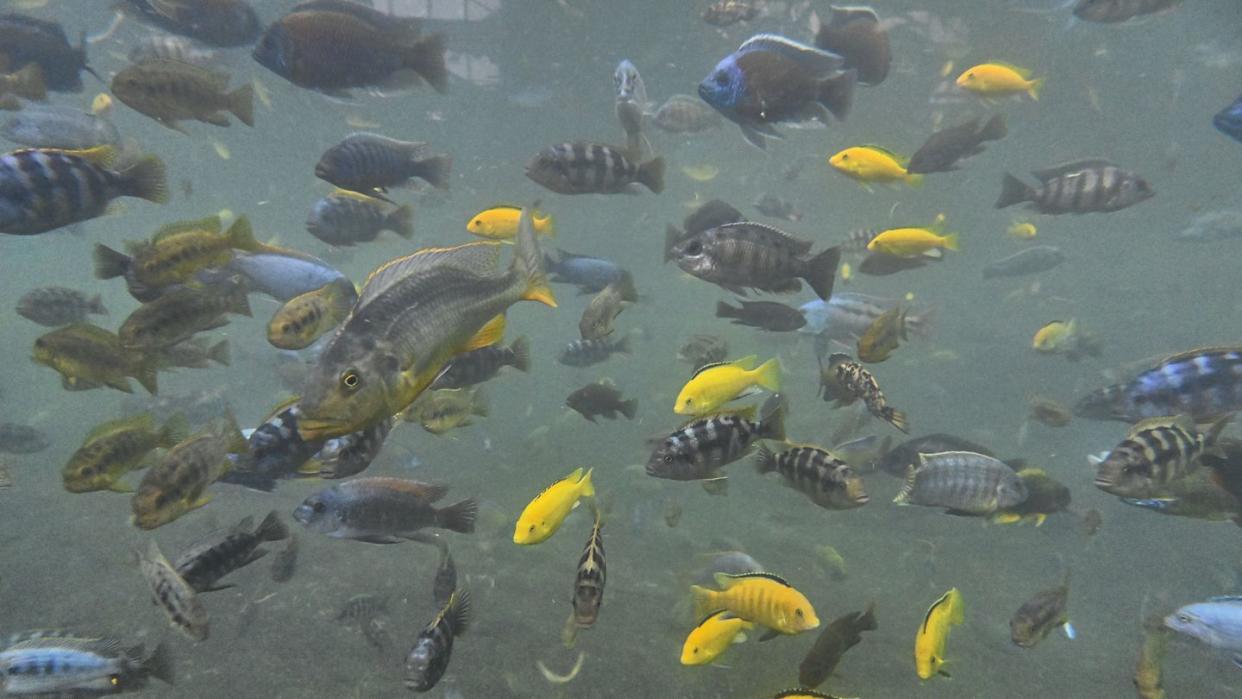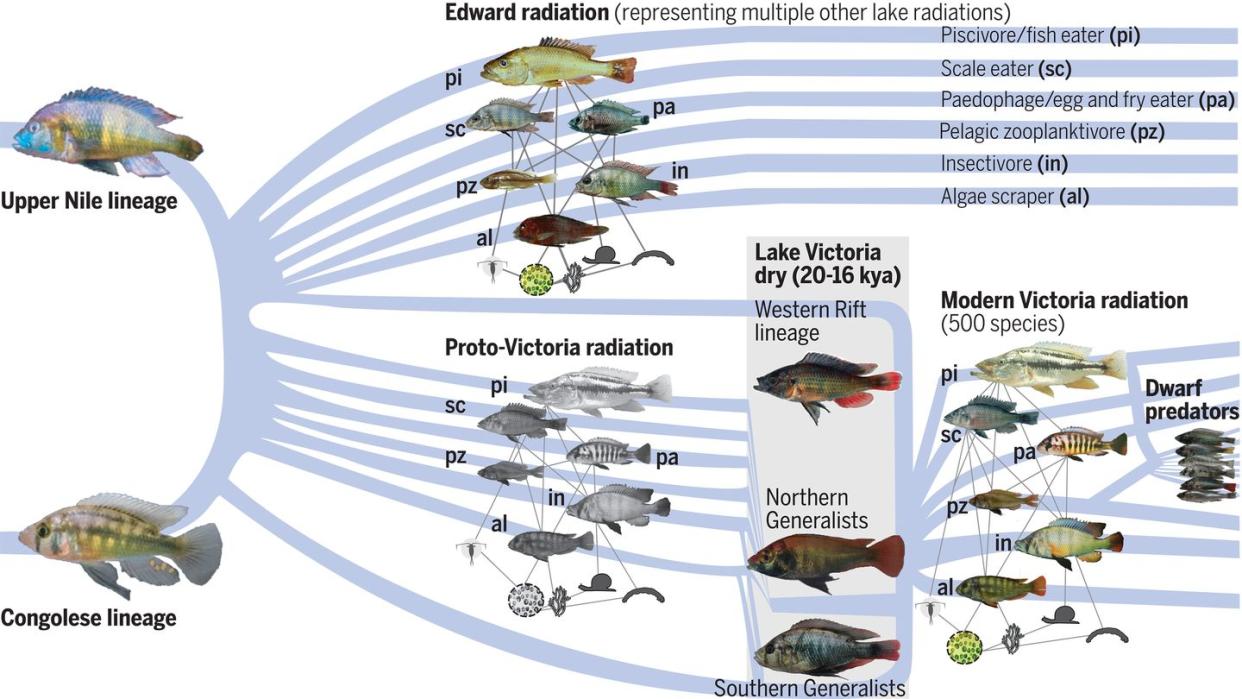How 500 Fish Species Rapidly Evolved in One Lake

"Hearst Magazines and Yahoo may earn commission or revenue on some items through these links."
East Africa’s Lake Victoria is home to over 500 species of cichlid, and according to scientists, that amount of diversity is a recent development.
With the lake only filling with water some 16,000, three populations of swamp-dwelling cichlids formed 500 distinct species via rapid “adaptive radiation.”
Scientists analyzed 464 cichlid genomes in Lake Victoria and the surround Great African Lakes region to uncover how cichlid evolved to fill every ecological niche within the lake
Lake Victoria, whose waters line the borders of Kenya, Uganda, and Tanzania in East Africa, is considered on the African Great Lakes. It’s the continent’s largest lake by surface area, and it’s also the largest tropical lake in the world. However, the lake also boasts another little known distinction beneath its watery surface — it’s home to the most rapid “adaptive radiation” event ever known among vertebrates.
Despite the “nuclear fallout” feel of the term, adaptive radiation is actually an evolutionary phenomenon when one animal group gives rise to many species. In the case of Lake Victoria, this is the fish known commonly as cichlids. According to two new studies, one published in the journal Science and the other in Nature, some 500 species of cichlids developed from only three swamp-dwelling cichlid populations in only 16,000 years. To put that in perspective, Darwin’s finches took millions of years to evolve into just 18 distinct species.
Those major differences between evolutionary timescales is due to the fact that finches slowly mutated over those millions of years whereas Lake Victoria’s 500 cichlid species instead experienced rapid hybridization (where two species create offspring with traits of both species) whose genetic differences filled every niche of the Lake’s ecosystem — from algae-slurping bottom feeders to large, sharp-toothed predators.

“Thanks to cycles of hybridization and diversification, countless variations in inherited traits have been preserved that have accumulated in these cichlid populations for millions of years,” Ole Seehausen, professor at the University of Bern as well as the Swiss water research Institute known as EAWAG, said in a press statement. “By preserving diverse species, we retain a resource pool that can help them adapt to environmental changes, such as coping with rising temperatures through occasional hybridization and sharing adaptations.”
To understand how cichlids created such a stunning genetic diversity as well a complex ecosystem, Seehausen and his team analyzed 464 cichlid genomes found in Lake Victoria and the Great African Lakes region, and slowly a fascinating ecological tale took shape. The fish were a mix of the same gene pool, originally supplied by three swamp-dwelling cichlid species when Lake Victoria refilled some 16,000 years ago. As the populations merged, they gave rise to more hybrid fish as well as different gene variants, whether a predilection for hunting or just getting by on algae.
One example details how zooplanktivores mixed with genes of large predator cichlids to form dwarf predators, a perfect mix of the two parent species. This is only one example of “genetic recycling” that allowed cichlids to quickly — at least by evolutionary standards — fill every ecological niche in Lake Victoria.
When it comes to rapid diversification, never underestimate a cichlid.
You Might Also Like
